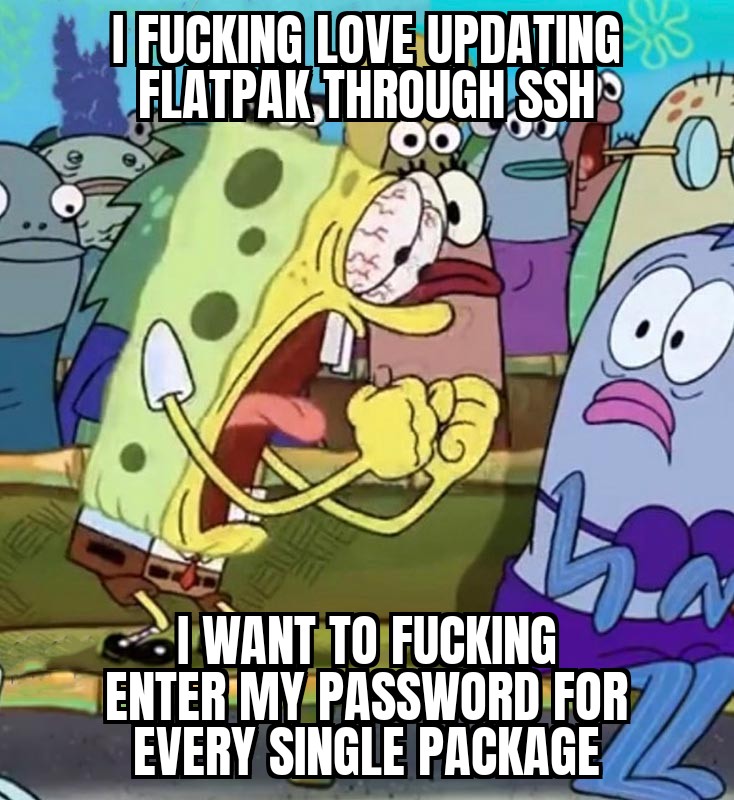this post was submitted on 06 Mar 2024
397 points (95.6% liked)
linuxmemes
21272 readers
426 users here now
Hint: :q!
Sister communities:
- LemmyMemes: Memes
- LemmyShitpost: Anything and everything goes.
- RISA: Star Trek memes and shitposts
Community rules (click to expand)
1. Follow the site-wide rules
- Instance-wide TOS: https://legal.lemmy.world/tos/
- Lemmy code of conduct: https://join-lemmy.org/docs/code_of_conduct.html
2. Be civil
- Understand the difference between a joke and an insult.
- Do not harrass or attack members of the community for any reason.
- Leave remarks of "peasantry" to the PCMR community. If you dislike an OS/service/application, attack the thing you dislike, not the individuals who use it. Some people may not have a choice.
- Bigotry will not be tolerated.
- These rules are somewhat loosened when the subject is a public figure. Still, do not attack their person or incite harrassment.
3. Post Linux-related content
- Including Unix and BSD.
- Non-Linux content is acceptable as long as it makes a reference to Linux. For example, the poorly made mockery of
sudoin Windows. - No porn. Even if you watch it on a Linux machine.
4. No recent reposts
- Everybody uses Arch btw, can't quit Vim, and wants to interject for a moment. You can stop now.
Please report posts and comments that break these rules!
founded 1 year ago
MODERATORS
you are viewing a single comment's thread
view the rest of the comments
view the rest of the comments

They do talk about how the library deduplication in memory is an OS feature and nothing to do with flatpak so it's possible that the same library being shared might be dedupped whether it is in same runtime or not. But I don't know. In any case, I guess extra RAM use is possible but I don't think (from personal experience and reading up on it) that it's very noticeable. Not to mention a lot of the used libraries do come with the runtimes, so that alleviates the issue if the dedupping isn't happening.
I think the intention is to keep at least some parts of the DE outside of it, but the apps that make it as flatpaks. So for KDE I think it would be something like the shell, file indexer, "low level" stuff like that out and image viewer, media player, browser, "apps" like that in flatpaks. Which does break the DE up but makes sense to me, with "system" being separated from "apps".
You could have "stable repos" for flatpaks, maintained by distros but I feel like it would take away some of the point of it (being to ease distro repo maintainer workload). Some devs will be happy that there's no "meddling" distro maintainers, which is a complaint I've sometimes seen from devs. I think the idea that the apps come straight from the devs is both good and bad. Good in that it's how the dev intended and updates are possible much quicker. Bad in that often the modification distros do serve a good purpose, of making the app better fit in to the whole or fixing stuff that misbehabes but for whatever reason hasn't been fixed upstream.
Nothing further to add, I'd just like to thank you for the engaging discussion. Have a good one!